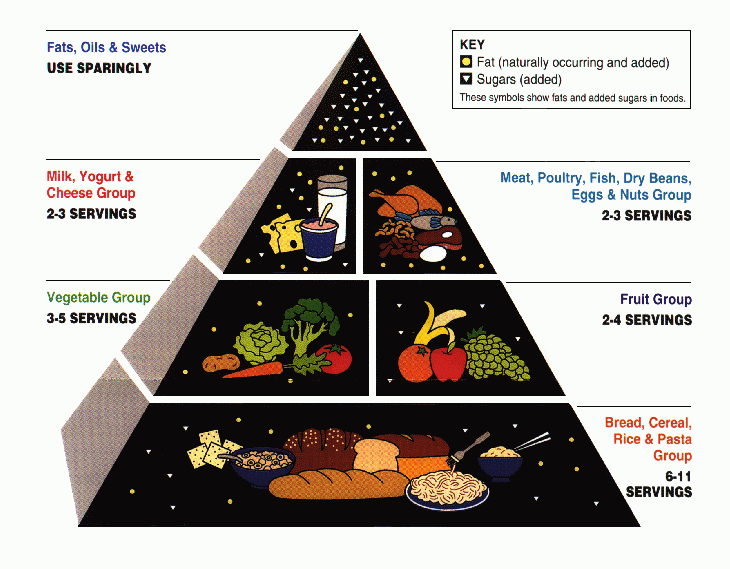The nutritional guidelines as we age are not the same as what you have heard for so long.
You are certainly familiar with the Government’s nutritional pyramid. It has been revamped repeatedly over time (See: A Brief History), but for many of us, the rules still hold weight. They need to be reconsidered as you get older. Those rules are for children, who have different needs than aging adults. There are also myths we should bust about seniors and nutrition. Let’s start rethinking nutritional guidelines for older Americans.
It seems as if every few years the food pyramid and other “rules of thumb” get questioned or turned upside down. If you do not want to feel as if you are riding on a yo-yo and you want to feed your body what it needs, you can simplify the process and follow these nutritional guidelines for older adults:
- You should consume about a gram of protein for every pound you weigh. In other words, if you weigh 150 pounds, you should take in around 150 grams of protein every day. Seniors seldom get the protein they need. This can make them weaker and more susceptible to falls and fractures. You can eat protein bars, drink shakes, eat meat or dairy, or consume plant-based protein.
- Fruit will give you energy and the same nutrients found in many vegetables. Eat fruit two or three times a day. Work it into other foods, like throwing berries on a bowl of cereal.
- Speaking of cereal and related items like bread, go for whole grains rather than highly processed white flour. You should not feel deprived, so give yourself permission for a decadent treat now and then, even if it does contain less-than-optimal ingredients.
- You need at least 1,200 mg of calcium every day. Take care of those bones, and feed your muscles. A strong person is less likely to get injured and more likely to bounce back from illness. Calcium can come from dairy products like milk, cheese, yogurt, and kefir. If you prefer non-dairy options, you can drink calcium-enriched orange juice or other calcium-fortified products. Seafood, beans, tofu, leafy greens, and dried fruit can provide calcium. Almonds, chia and poppy seeds, whey protein powder, rhubarb, and figs are additional options for getting your calcium.
- Leafy greens high in antioxidants are your friend. Shoot for two to three cups a day – that is the raw amount. When they cook down, the volume is much less. Do you hate kale? No problem. Find greens you enjoy. Experiment with different cooking methods. You could throw raw greens into the blender with fruit and protein powder for a yummy shake that ticks off several boxes.
Myths About Seniors and Nutrition
There is a great deal of misinformation about the nutritional needs of older adults. For example, while you might need fewer calories than you did when you were chasing toddlers around the house, you need more of some nutrients, like calcium and vitamins D and B12.
You should not skip meals, even if you do not have a hearty appetite. You should make sure that you drink plenty of water throughout the day. Dehydration is common among aging adults, and it can be extremely dangerous.
Nutrition still matters, no matter your age, and it has a huge impact on health. You might think that in your golden years you have earned the right to eat whatever you want, but doing so can give you a lower quality of life in those precious years. Your nutrition will affect your physical and mental health. Popping a multivitamin will not do the trick by itself. If you want to stay healthy, alert, and active, continue to make healthy eating a priority.
References:
Huffpost. “Debunked! 7 Common Senior Nutrition Myths.” (accessed November 8, 2019) https://www.huffpost.com/entry/common-senior-nutrition-myths_b_12392370
Healthline. “Top 15 Calcium-Rich Foods (Many Are Non-Dairy.” (accessed November 14, 2019) https://www.healthline.com/nutrition/15-calcium-rich-foods


